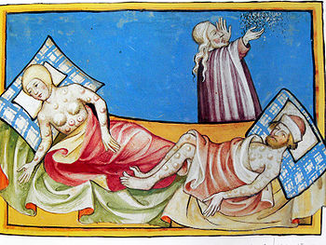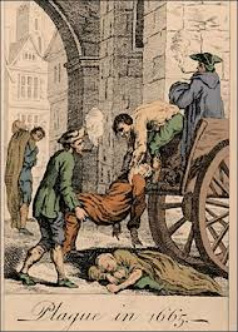
Significance to Historical Events
The silk making process has evolved from the earlier times, machines have been invented and newer techniques have been found. Silk making became less tedious and exhausting. During the beginning of the Christian Era images surfaced of the spinning wheel being used in 1210 and of a silk spinning machine powered by a water wheel in 1313. The simplification of silk started in the 17th and 18th century. Silk and textile mills were located on the river and powered by a water wheel. It is believed that by the 18th century advances in the textile industry were a driving force behind advances in technology as a whole.
The Silk Road is known for transporting ideas for many scientific and technological innovations across the world but it also carries diseases. The Black Death affected the Silk Road and the silk trading network negatively. In the 14th century the Black Death devastated most of the world. It was also believed to have started in Central Asia in 1347 and spread by way of the Silk Road to Europe in less than a year. There are 4 different forms: septicemic, pneumonic, enteric, and bubonic, these are all caused by a bacteria called Yersinia pestis. This is a highly deadly disease and most victims die within a week. The basis of why the disease spread so quickly is through rats and fleas. Rats and fleas were transported through the Silk Road. Rats were the hosts for the disease and when traveling through the Silk Road they would infect others city by city. It was so contagious that when the people that were sick were thrown into open pits and set on fire to prevent further contamination. Houses were boarded up and burned with diseased people on the inside.The Black Death ended up contaminating Asia, the Middle East, Northern Africa, and Europe; killing a third of the population of Europe.
The silk making process has evolved from the earlier times, machines have been invented and newer techniques have been found. Silk making became less tedious and exhausting. During the beginning of the Christian Era images surfaced of the spinning wheel being used in 1210 and of a silk spinning machine powered by a water wheel in 1313. The simplification of silk started in the 17th and 18th century. Silk and textile mills were located on the river and powered by a water wheel. It is believed that by the 18th century advances in the textile industry were a driving force behind advances in technology as a whole.
The Silk Road is known for transporting ideas for many scientific and technological innovations across the world but it also carries diseases. The Black Death affected the Silk Road and the silk trading network negatively. In the 14th century the Black Death devastated most of the world. It was also believed to have started in Central Asia in 1347 and spread by way of the Silk Road to Europe in less than a year. There are 4 different forms: septicemic, pneumonic, enteric, and bubonic, these are all caused by a bacteria called Yersinia pestis. This is a highly deadly disease and most victims die within a week. The basis of why the disease spread so quickly is through rats and fleas. Rats and fleas were transported through the Silk Road. Rats were the hosts for the disease and when traveling through the Silk Road they would infect others city by city. It was so contagious that when the people that were sick were thrown into open pits and set on fire to prevent further contamination. Houses were boarded up and burned with diseased people on the inside.The Black Death ended up contaminating Asia, the Middle East, Northern Africa, and Europe; killing a third of the population of Europe.

